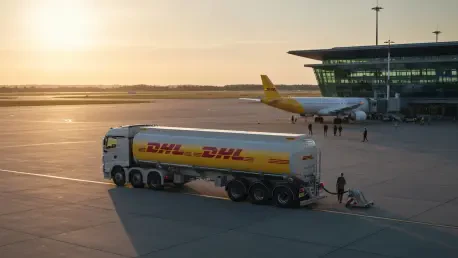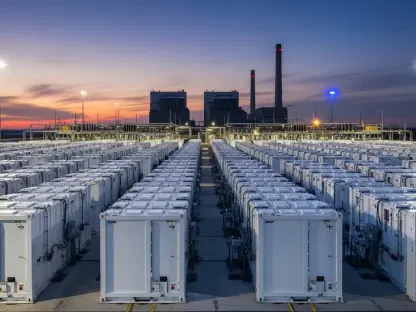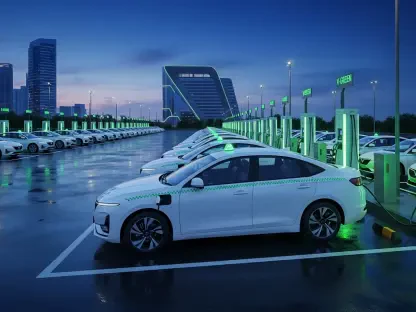I’m thrilled to sit down with Christopher Hailstone, a renowned expert in energy management and renewable energy, who also serves as our Utilities specialist. With his deep knowledge of grid reliability and sustainability in high-energy sectors like aviation, Christopher offers a unique perspective on the groundbreaking Sustainable Aviation Fuel (SAF) agreement between DHL Express and Phillips 66. Today, we’ll explore how this partnership advances DHL’s environmental goals, the impact on emissions reduction, the strategic use of key locations, and the innovative systems behind tracking sustainability benefits.
Can you start by telling us what this Sustainable Aviation Fuel agreement with Phillips 66 signifies for DHL Express and how it aligns with their broader sustainability vision?
Absolutely, Silvia. This agreement is a landmark for DHL Express, securing over 240,000 metric tons of SAF over three years, which is a massive commitment to reducing their carbon footprint. It’s not just about the volume; it’s about integrating SAF into their operations as a core component of their sustainability strategy. DHL has a clear goal of reaching net-zero emissions by 2050, and this deal is a concrete step toward that by directly tackling one of the biggest challenges in logistics—aviation emissions. It also sets a powerful example for the industry, showing that large-scale adoption of renewable fuels is both feasible and impactful.
What can you tell us about the environmental impact of this deal, especially in terms of the projected reduction in greenhouse gas emissions?
The numbers here are striking. DHL estimates this agreement will cut about 737,000 metric tons of lifecycle greenhouse gas emissions compared to conventional jet fuel. That’s calculated by assessing the entire production and use cycle of SAF, which emits significantly less carbon than traditional fuels due to its renewable feedstocks. In practical terms, this reduction is like taking thousands of cars off the road for a year. For DHL, it means cleaner operations and the ability to offer greener solutions to customers, especially through programs like GoGreen Plus, where clients can offset their supply chain emissions.
Why was Los Angeles International Airport chosen as the primary hub for SAF supply, and what factors played into that decision?
LAX being DHL’s West Coast hub makes it a logical choice for rolling out SAF at scale. It’s a major operational center with high flight volumes, so concentrating SAF usage there maximizes impact right away. Additionally, its proximity to Phillips 66’s Rodeo Renewable Energy Complex in California likely simplifies logistics and reduces transport emissions for the fuel itself. LAX also has the infrastructure and regulatory environment in California that supports renewable fuel initiatives, making it a strategic starting point before expanding to other airports.
Speaking of expansion, what are the plans for bringing SAF to other West Coast airports like San Francisco International?
The plan to include airports like SFO shows DHL’s intent to scale up SAF usage across their network. While LAX is the primary focus due to volume and logistics, extending to SFO and potentially other West Coast hubs will distribute the environmental benefits more broadly. It’s likely they’ll assess operational needs, fuel availability, and airport readiness before full implementation. This phased approach helps manage costs and ensures the supply chain for SAF remains stable as demand grows across their operations.
Can you walk us through how the book-and-claim system works for tracking emissions reductions with SAF?
Sure, the book-and-claim system is a clever way to account for SAF benefits without needing the physical fuel at every location. Essentially, DHL purchases SAF and uses it at specific hubs like LAX, but the emissions reductions are credited to their overall operations, even for flights where conventional fuel is used. It’s tracked through certificates that verify the amount of SAF produced and consumed, ensuring transparency. This system is crucial because SAF isn’t yet available everywhere, but it allows companies like DHL to claim the environmental benefits globally while working toward wider physical adoption.
Let’s talk about the source of this SAF. What makes Phillips 66’s Rodeo Renewable Energy Complex in California stand out in the renewable fuel space?
The Rodeo facility is a powerhouse, producing up to 150 million gallons of neat SAF annually, which places it among the largest renewable fuel plants globally. What sets it apart is its scale and focus on sustainable feedstocks—think waste oils and agricultural byproducts—that drastically cut lifecycle emissions. For DHL, partnering with a facility like this ensures a reliable, high-quality SAF supply while aligning with their decarbonization goals. It’s also a signal to the market that renewable fuel production can meet the demands of major players in aviation and logistics.
Travis Cobb from DHL described this agreement as a key part of their sustainability roadmap. Can you shed light on how this fits into their other initiatives for reducing emissions?
Certainly. This SAF deal is a cornerstone, but it’s part of a broader roadmap for DHL that includes electrifying ground fleets, optimizing flight routes for fuel efficiency, and investing in renewable energy for facilities. They’ve also been forming SAF partnerships across Europe, the Americas, and Asia Pacific since 2021, showing a global commitment. Programs like GoGreen Plus tie it all together by letting customers directly contribute to emissions reductions through SAF usage. It’s a multi-pronged approach where aviation fuel is just one piece of the puzzle, albeit a critical one given its outsized impact on emissions.
Looking ahead, what’s your forecast for the role of Sustainable Aviation Fuel in transforming the logistics and air cargo industry over the next decade?
I’m optimistic but realistic. SAF has the potential to be a game-changer for the industry, especially as production scales up and costs come down. Over the next decade, I expect we’ll see more agreements like DHL’s, with larger volumes and broader geographic coverage as infrastructure for SAF distribution improves. Regulatory support, like carbon pricing or mandates, will likely accelerate adoption. However, challenges remain—supply is still limited compared to demand, and not all airlines or logistics firms can afford the premium yet. If cross-industry collaboration continues, though, SAF could become the standard rather than the exception, driving the sector closer to net-zero goals.









